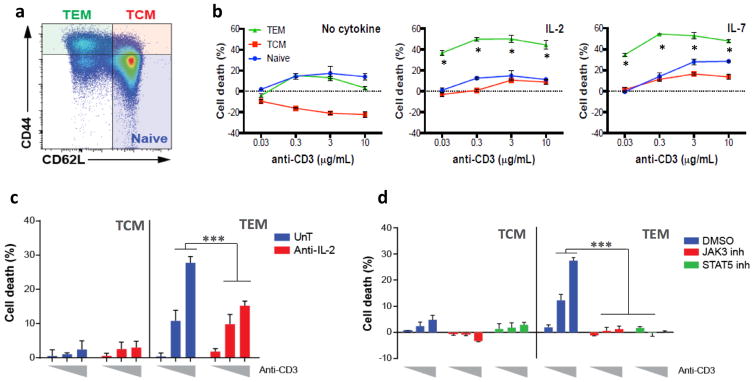Figure 1.
IL-2/STAT5 pathway promotes cell death of effector memory T cells upon RICD in mice and humans.
(a) Expression of CD44 and CD62L (gated on CD4+CD8-) on splenocytes obtained from BALB/c mice, representing naïve T cells (CD44-CD62L+), central memory T cells (TCM; CD44+CD62L+) and effector memory T cells (TEM; CD44+CD62L-). (b) After isolation of the different subsets of naïve and memory T cells from BALB/c spleens by flow sorting, cells were then stimulated in vitro for 24 hours with indicated concentration of plate-bound anti-CD3 in the presence of either no cytokine, IL-2 (100 IU/mL) or IL-7 (10 ng/mL) as indicated. The percent cell loss was calculated at different concentrations of anti-CD3 for each T cell subset using TOPRO-3 staining. * p=<0.05 (c) Human TCM and TEM isolated from healthy control subjects by flow cytometry were stimulated in vitro for 24 hours with plate-bound anti-CD3 at different concentrations (from left to right: 0.1, 1 and 10 μg/mL) and left untreated (blue) or treated either neutralizing anti-IL-2 in combination with blocking anti-CD122 antibodies (10 μg/mL for each antibody) (red) or (d) treated with dimethyl sulfoxide (DMSO) vehicle (blue), JAK3 (red) or STAT5 (green) chemical inhibitors (100 μM). Cell loss percentage was assessed as in (b). Data are representative of at least three independent experiments.

